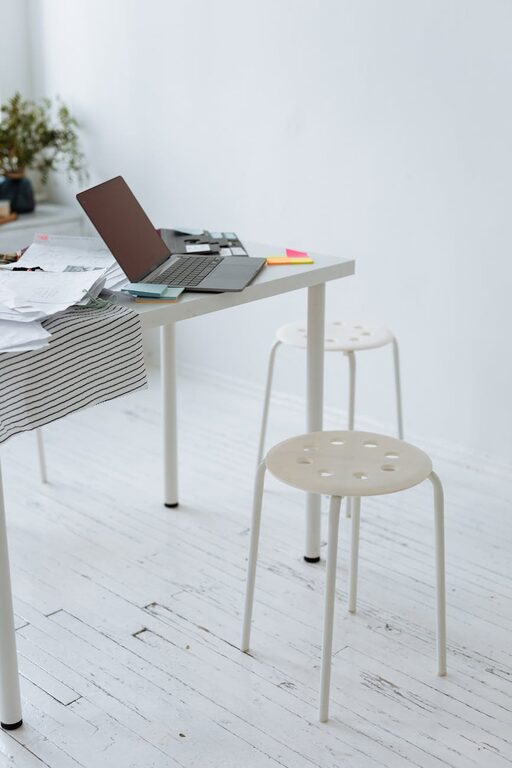Simple Ways to Reduce Household Paper Clutter Quickly

Managing paper clutter is a common challenge in many households. Bills, receipts, school papers, and junk mail can quickly accumulate, leaving desks and countertops messy and stressful. Fortunately, with a few simple strategies, you can reduce paper clutter and enjoy a more organized, peaceful home environment. This post shares straightforward tips to tackle paper clutter effectively.
Why Reduce Paper Clutter?
Before diving into solutions, it helps to understand why minimizing paper clutter is valuable:
– Less Stress: Piles of paper can feel overwhelming and distracting.
– More Space: Clearing paper frees up valuable room on surfaces and in drawers.
– Better Organization: Important documents become easier to find.
– Protects the Environment: Reducing paper use and recycling conserves resources.
With these benefits in mind, let’s explore practical ways to organize and cut down on paper clutter.
1. Create a Dedicated Paper Station
Having a specific area for handling paper helps control the flow and prevents random piles. This could be a small table, a section of your desk, or a portable organizer. Equip your station with:
– A set of folders or trays labeled (e.g., To Do, To File, Recycle)
– A shredder for confidential documents
– A pen and some sticky notes for quick notes
Whenever paper enters your home, bring it here first. This simple habit centralizes paper handling and reduces lost or scattered documents.
2. Sort Mail Immediately
Mail often starts the clutter cycle. To keep it under control:
– Open mail over your paper station.
– Sort into categories: urgent, manageable later, recycle, or shred.
– Handle urgent mail (bills, invitations) promptly, so it doesn’t pile up.
– Recycle junk mail right away—if you’re not interested, discard without setting it aside.
Some mail can be handled digitally by requesting electronic statements or opting out of physical catalogs.
3. Digitize Important Documents
Reducing physical paper keeps clutter down and has the added bonus of digital backups.
– Use a scanner or a mobile scanning app to save important papers like warranties, tax documents, and receipts.
– Organize digital files with clear folder names and dates.
– Back up digital copies on a cloud service or external drive.
– Once digitized, decide if you need to keep the paper originals—especially if you have legal or tax reasons.
Digitizing also makes it easier to search and retrieve documents when needed.
4. Use a Mail Organizer or Wall File
For busy households, a multi-slot wall organizer or desktop file holder can keep papers sorted and off counters. Assign each family member a slot for their mail or school papers, which helps everyone keep track of their own documents. Check and clear these regularly to avoid backlog.
5. Limit Paper Coming Into the House
Prevention is often the best cure. To reduce incoming paper:
– Opt for paperless billing and banking.
– Unsubscribe from unwanted catalogs and newsletter mailings.
– Encourage family members to submit assignments or notes digitally.
– Use apps for grocery lists, calendars, and notes to minimize printed lists.
Cutting down on paper input reduces the bulk you need to manage.
6. Schedule Regular Paper Decluttering Sessions
Set aside time weekly or monthly to review your paper system.
– File completed items.
– Recycle or shred outdated papers.
– Respond to any remaining mail or forms.
Consistency prevents piles from building up and keeps your system running smoothly.
7. Use Labeling for Easy Identification
Labels make sorting and finding papers easier. Whether on folders, trays, or storage boxes, clear labels help maintain order and speed up filing.
– Use descriptive names (e.g., “Utility Bills,” “Medical Records”) rather than vague terms.
– Consider color-coding for different categories or family members.
8. Shred Sensitive Documents Promptly
Protect your privacy by promptly shredding papers with personal information once they’re no longer needed.
– Invest in a small cross-cut shredder.
– Store shredding bags nearby for convenience.
– Schedule regular shredding to avoid piles of sensitive waste.
9. Store Papers Efficiently
When you do keep physical papers, use appropriate storage to keep them neat.
– Use accordion files or binders with clear inserts.
– Store documents vertically to save space and prevent curling.
– Keep frequently used papers in accessible locations, and archive older papers elsewhere.
Final Thoughts
Reducing household paper clutter is achievable with organization, good habits, and a bit of regular maintenance. By creating a system that fits your lifestyle and improving how you process paper as it enters your home, you can enjoy a tidier space and less stress. Try implementing these simple tips one at a time, and watch how your home transforms into a clutter-free haven.
If you found this guide helpful, consider sharing it with friends or family who might also benefit from less paper clutter at home!
